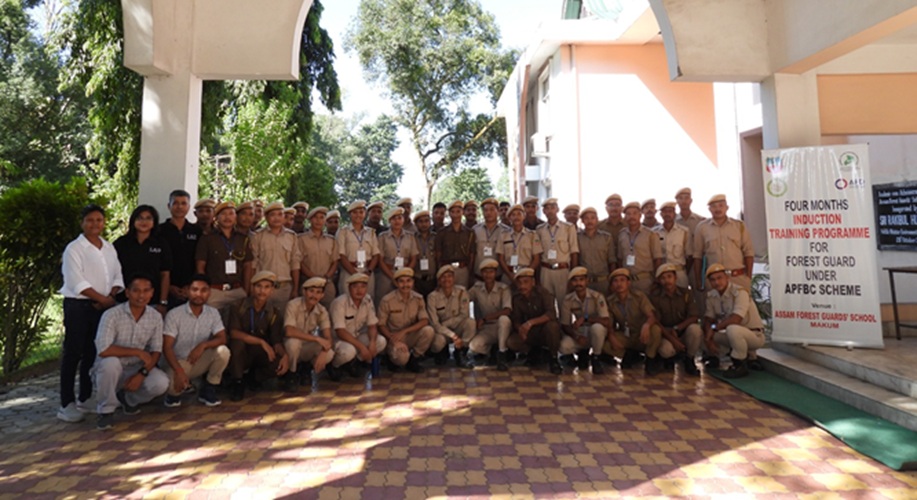Guwahati: Aaranyak conducted a two-day Basic Patrol Technical Training for frontline forest personnel at the Makum Forest Guards School in Tinsukia district on October 14 and 15.
The initiative aimed to strengthen the capacity of forest staff in data-driven patrolling and wildlife crime prevention.
A total of 43 participants, including newly recruited and in-service Forest Guards, took part in the programme, engaging in both classroom sessions and field-based exercises that simulated real-world patrolling scenarios.
The training focused on enhancing technical skills such as GPS usage, data management, wildlife threat documentation, and detection of illegal activities, providing participants with practical tools to support effective biodiversity protection within Assam’s Protected Areas.
The sessions were facilitated by Aaranyak’s Legal and Advocacy Division (LAD), including Deputy Director Dr. Jimmy Borah, Binita Baruwati, Ivy Farheen Hussain, Mizing Boro, and Bijeet Baro. Baruwati led interactive discussions on systematic data collection and analysis to improve patrolling efficiency.
Hussain provided insights on global and local perspectives of wildlife crime and identification of trafficked wildlife products.
Boro and Baro conducted technical training on detecting threats to wildlife and practical use of GPS devices to enhance patrol coverage.
Dr. Borah highlighted the broader framework linking wildlife crime to human-wildlife conflict and zoonotic disease risks.
ALSO READ: Meghalaya: Protest against GHADC salary system, Tura Medical College PPP hits normal life
The programme’s closing ceremony was attended by Saidul Islam, Superintendent of Makum Forest Guards School, who praised Aaranyak’s continued efforts to strengthen enforcement capacities at the field level.
Logistical and facilitation support for the training was coordinated by Dipak Changmai, Physical Training Instructor, and Arunav Dutta of Makum Forest Guards School.
This training is part of Aaranyak’s ongoing commitment to empower forest personnel across the Northeast with practical, data-driven methods for the enforcement of conservation initiatives.















